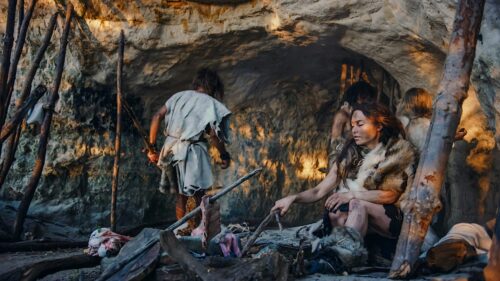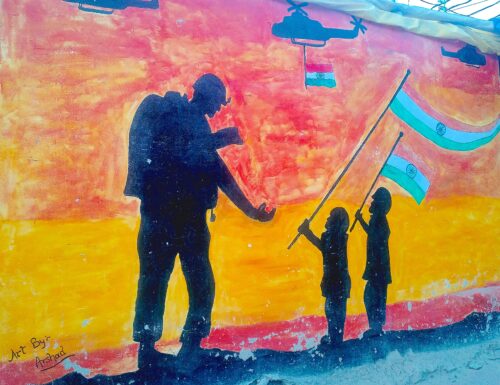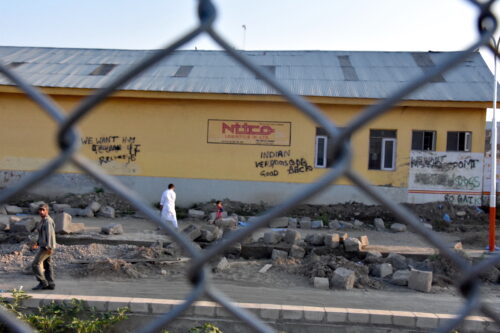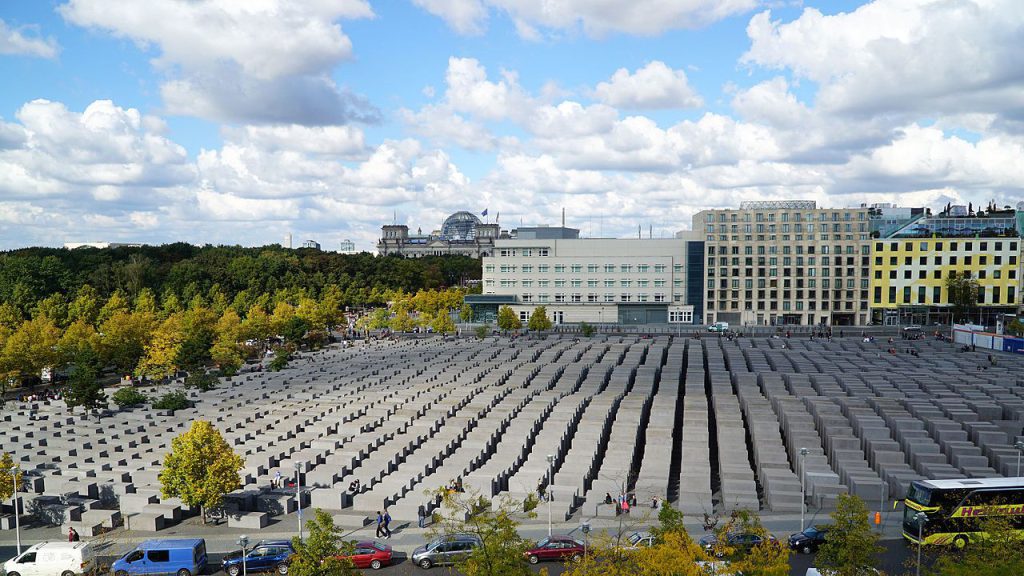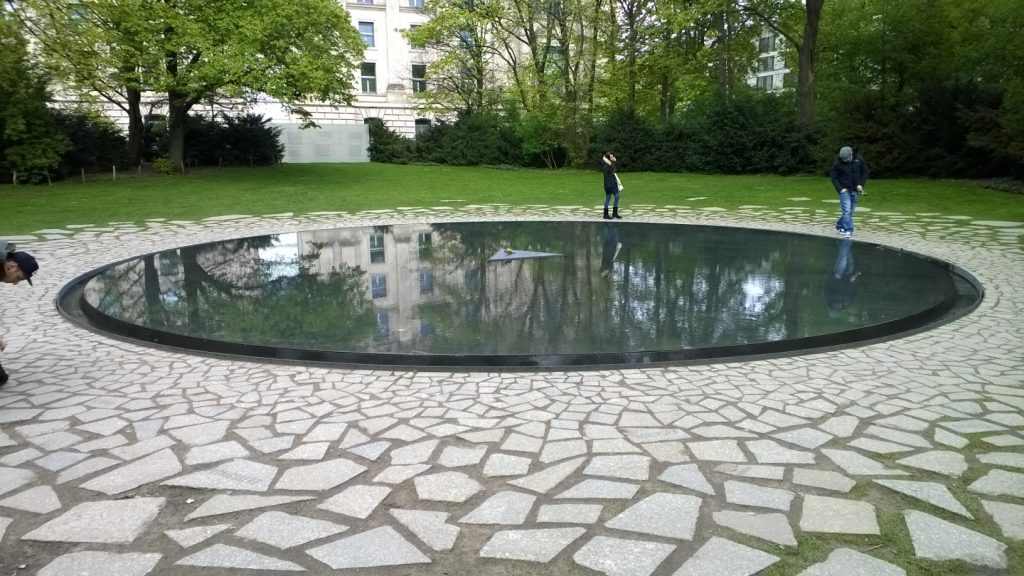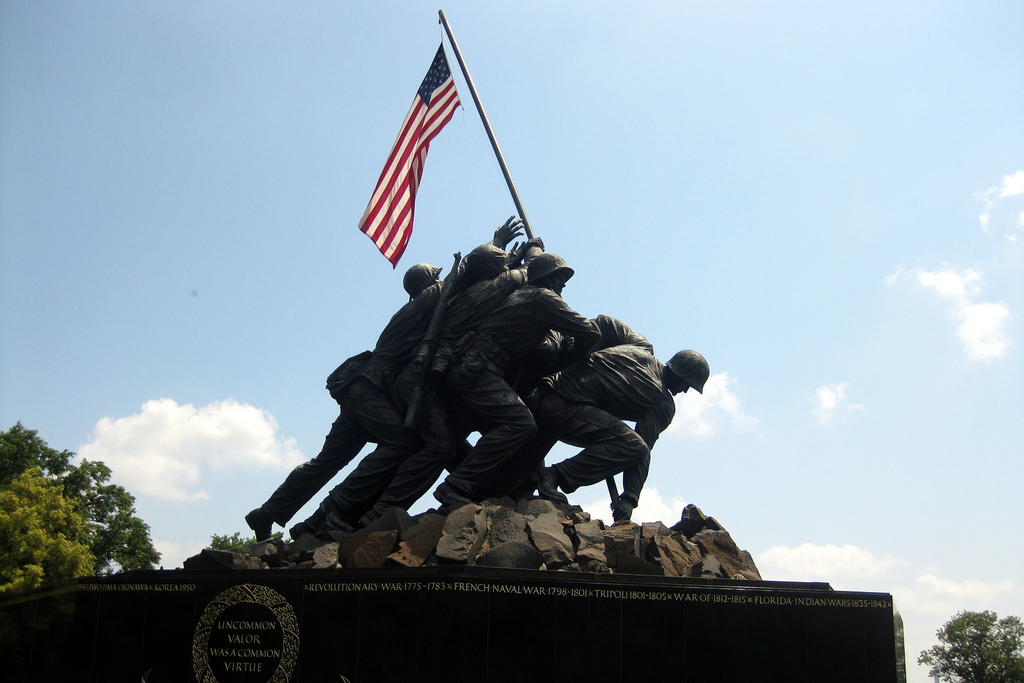Reconsidering How We Honor Those Lost to War
Cities in the southern U.S. are currently under pressure to take down statues of Confederate leaders, whose publicly sanctioned presence is a constant source of injury to many. In just one of numerous examples, Levar Stoney, the African-American mayor of Richmond, Virginia, recently announced that, while he doesn’t think his city’s Confederate memorials should be removed, a commission has been formed to consider how best to “set the historical record straight.” Stoney said these monuments form a “narrative etched in stone and bronze more than 100 years ago.” Such memorials populate our built landscape with stories, telling us whom to honor and whose sacrifice should be invisible.
I recently took a trip to Germany, and over the course of a day I spent walking around Berlin I found myself reimagining what might be done with official memorials in the U.S. As I looked at the ways Germany’s traumatic history has been publicly memorialized in its capital city, something seemed strange. And then I realized what it was: Unlike any other city I know, most of Berlin’s war monuments memorialize the victims of German militarism—not the country’s own fallen soldiers.
The most famous of these monuments is the Memorial to the Murdered Jews of Europe (also known as the Holocaust Memorial)—a massive expanse of rectangular concrete blocks of varying sizes, reminiscent of tombstones, arrayed in undulating rows. There are 2,711 blocks in all. In some places they loom over visitors, creating claustrophobic tunnels that dwarf individual people; in others, visitors sit on the blocks and chat, as if they were park benches, or kids jump from one block to another and play hide and seek. Below ground are the names of roughly 3 million Holocaust victims. Whether you like the design or not (and opinion is divided), located in the heart of Berlin, just a block from the Brandenburg Gate, it is a very public proclamation of Germany’s declared responsibility and remorse for the Nazi Holocaust.
Not far away is a small park with a reflecting pool that is a separate memorial to the Sinti and Roma (also known as Gypsies) killed by the Nazis. And just around the corner from that is another memorial, to the gays and lesbians killed in the Holocaust. It features a dark concrete cuboid with a window through which visitors can watch looped video footage of gays and lesbians kissing—a voyeuristic peek into the forbidden way of life the Nazis sought to extinguish and a salute to its resilience.
Unlike classic war memorials, these are abstract and modern in their design: no figurative sculptures of suffering soldiers or bereaved mothers, no triumphant generals on horseback, and no giant stone crosses engraved with names. I did find one war memorial in Berlin in the grand classical mode: the Soviet War Memorial in Tiergarten Park, which features a massive bronze soldier standing atop a pedestal bearing the words, “eternal glory to heroes who fell in the struggle against the German fascist invaders for the freedom and independence of the Soviet Union.” But even that monument is a memorial not to Germany’s own soldiers but to the victims of German militarism—in this case its Soviet victims, who are too easily forgotten in the West. To my astonishment, the German soldiers killed in World War II are publicly invisible in the nation’s capital.
Returning from Berlin, I looked with fresh eyes at Washington D.C., the city where I live. I thought about whose suffering and heroism are made visible and invisible in Washington’s public monuments. Drawing on Berlin’s example, I could suddenly imagine a different monumental landscape.
In addition to the iconic Marine Corps War Memorial (also known as the Iwo Jima Memorial) and the World War II Memorial (which was characterized accurately by Washington Post columnist Marc Fisher as “a hodgepodge of cliché and Soviet-style pomposity”), is there a way to memorialize the non-Americans, many of them civilians, who perished in a war of extraordinary ferocity and scope? This might include those killed by American atomic bombs in Hiroshima and Nagasaki—an acknowledgment of the unprecedented nature of the atomic attacks and a reminder that, whether or not we believe the use of the atomic bomb was vital in ending the war, we should strive never to use such weapons again.
The Vietnam Veterans Memorial is rightly honored as the most aesthetically bold and emotionally powerful memorial in Washington. But imagine if, in addition to the 58,000 names of American soldiers lost in Vietnam, the memorial found some way to recognize the even greater suffering of the Vietnamese people, who may have lost 2 million of their number in the war (with some estimates going over 3 million; exact numbers will never be known). Many of the Vietnamese who died now have relatives who are U.S. citizens.
And does Washington really need 18 different monuments to the North’s victory in the Civil War, many of them statues of military officers whose names would otherwise long since have been forgotten? You might think from the statues dotted around the city that the Civil War was fought entirely by Union officers on horseback. I’m not saying we should erect statues of Confederate officers for balance. But aren’t there other ways of broadening the Civil War narrative etched in stone and bronze? Could we not, for example, create a space to memorialize the city of Atlanta, which was razed to the ground by General William T. Sherman? And how about a statue of a liberated slave fighting to keep his freedom? And is there no way to remember all of the 600,000 soldiers on both sides who perished during the Civil War? They were all Americans, after all.
It’s time to think afresh about war memorials. Wherever you live, look around and imagine memorials that might be. Memorials, like Berlin’s, that go beyond glorifying the heroes of one’s own side—that make real the suffering as well as the heroism that is the reality of war.





























